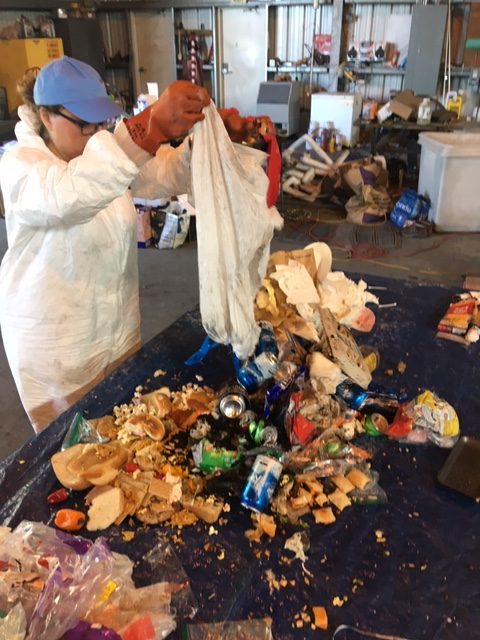
A study is taking a hard look at what people in Wrangell throw away. It’s part of a community effort led by the Wrangell Cooperative Association tribe to find ways to reduce waste that’s barged down south.
Before we got into the dirty details, I had to ask the trash study’s lead, Chris Buness, just how gross was it going through thousands of pounds of garbage.
“It wasn’t that bad at all when you have a Tyvek suit and gloves,” Buness says.
The results show the bulk of Wrangell’s refuse was food waste — a third of the total weight. The runner up was paper at 17 percent.
“So a total of 50 percent could be composted,” Buness says.
In other words, it didn’t need to be thrown away in the first place.
But plastics were a big factor. Around 17 percent of trash was plastic. Wrangell doesn’t offer residents a way to recycle plastic water bottles, food containers and other commonly found packaging.
Then there’s what the researchers didn’t find. Corrugated cardboard was just 1 percent. That’s because it can be recycled.
“A lot of people do burn their own cardboard, they take it to the dump, or to City Market where they can have it bailed,” Buness says.
These figures came from a study commissioned by the Wrangell Cooperative Association, the Southeast tribe which secured an EPA grant through the Indian Environmental General Assistance Program.
To do this, researchers literally sifted through 1,700 pounds of garbage from 80 households during a single week in September. These findings will help the tribe develop its integrated solid waste management plan. The document would note what businesses and public agencies are throwing out too, not just households. With that information, the tribe will have a better sense of what waste collection or education events to hold.
The tribe currently collects used gillnets throughout the year and hosts an e-waste event for old computers, appliances and cell phones. The City of Wrangell hopes to partner with the tribe to better manage the community’s wastestream as a whole. The city’s solid waste plan was last updated in 2015.
The tribe’s goal is to finalize its waste plan by the end of the year.











